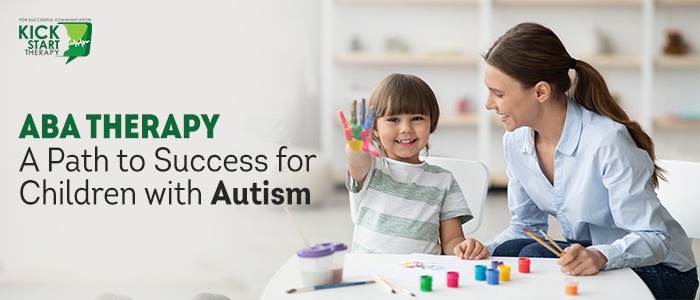
Applied Behavior Analysis therapy is the most recognized and effective approach to helping individuals, particularly children with Autism Spectrum Disorder, develop essential skills and improve their quality of life. By focusing on positive reinforcement and individualized teaching strategies, ABA therapy creates engaging and supportive learning experiences. This blog will delve into the principles of ABA therapy, its benefits, and how it fosters a positive learning environment.
The concept of ABA therapy is rooted in the science of learning and behavior. It involves understanding how behavior works, how it is affected by the environment, and mostly how learning takes place. The primary goal of ABA therapy is to increase positive behaviors and at the same time decrease negative ones by using techniques that are backed by evidence and research.
ABA Therapy offers a wide number of benefits for individuals with ASD and other developmental disorders. Here are some key advantages:
1. Skill DevelopmentABA therapy helps individuals develop numerous skills, from basic life skills such as dressing and grooming to more complex skills like communication, social interaction, and academic abilities. By breaking down tasks into manageable steps, the therapy of ABA makes learning more accessible and less overwhelming.
2. Improved CommunicationMany children with ASD face challenges in communication. ABA therapy employs various strategies and techniques to enhance verbal and non-verbal communication skills. For example, therapists may use picture exchange communication systems (PECS) or sign language to help children express their needs and desires more effectively.
3. Behavioral ImprovementsABA therapy is highly effective in addressing behavioral issues. By focusing on the root causes of challenging behaviors and teaching alternative, positive behaviors, ABA helps reduce tantrums, aggression, and other disruptive actions. This not only improves the individual's well-being but also creates a more harmonious environment for families and caregivers.
4. Enhanced Social SkillsSocial skills are extremely crucial for building relationships and participating in community activities. ABA therapy emphasizes teaching appropriate social behaviors, such as taking turns, sharing, and initiating conversations. Through role-playing, modeling, and social stories, individuals can learn how to interact with others in a socially acceptable manner.
5. Greater IndependenceThe ultimate goal of ABA therapy is to achieve greater independence. By equipping them with essential life skills and coping strategies, ABA empowers individuals to navigate daily challenges more effectively and with less reliance on external support.
Creating a positive learning experience is at the heart of ABA therapy. Here are some strategies that ABA therapists use to ensure that therapy sessions are engaging and enjoyable:
1. Building Trust and RapportEstablishing a strong therapeutic relationship is crucial for successful ABA therapy. Therapists invest time in getting to know the individual, building trust, and creating a safe and supportive environment. Such rapport forms the foundation for effective learning.
2. Incorporating Interests and PreferencesTherapists often incorporate the individual's interests and preferences into therapy sessions. For instance, if a child loves cars, therapists might use toy cars as rewards or integrate them into learning activities. This makes therapy more engaging and motivating.
3. Celebrating Small SuccessesRecognizing and also at the same time celebrating the smallest achievements is a vital aspect of ABA therapy. Positive reinforcement, such as verbal praise, high-fives, or a preferred activity, helps boost the individual's confidence and motivation to keep learning and growing.
4. Using Play-Based TechniquesPlay is a powerful tool for learning for young children. ABA therapists use play-based techniques to teach new skills in a fun and interactive way. Play-based learning not only makes therapy enjoyable but also promotes natural learning and skill acquisition.
5. Creating a Structured EnvironmentWhile flexibility is important, a structured environment provides predictability and consistency, which are crucial for effective learning. ABA therapists establish clear routines and expectations, helping individuals understand what is expected of them and reducing anxiety.
ABA therapy is a dynamic and evidence-based approach that creates positive learning experiences for individuals with developmental disorders. By focusing on individualized strategies, positive reinforcement, and continuous data analysis, ABA therapy helps individuals develop essential skills, improve communication, and even enhance their overall quality of life. With the dedication and support of skilled therapists, ABA therapy paves the way for meaningful progress and greater independence, creating a brighter future for those it serves.



